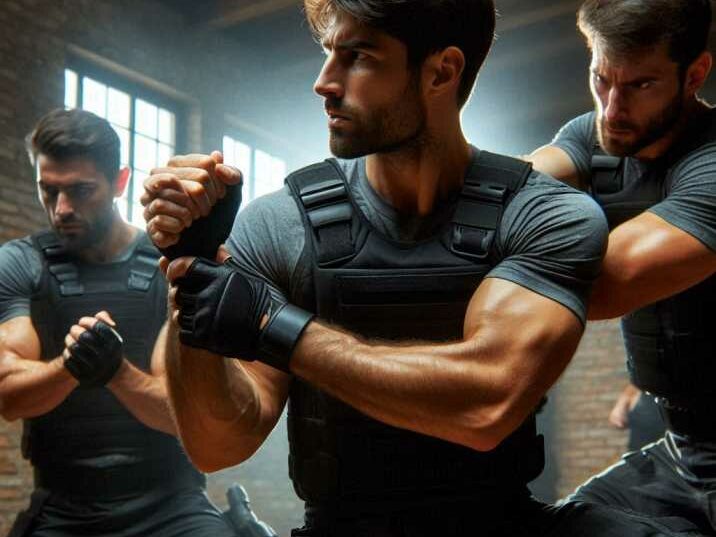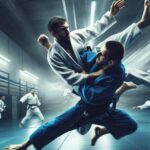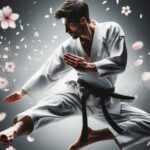Introduction
Table of Contents
Martial arts have fascinated humanity for centuries, serving as a means of self-defense, physical fitness, and even a path to spiritual enlightenment. Among the myriad forms of martial arts practiced worldwide, some are renowned for their lethal techniques and deadly efficiency. But what truly is the most deadly form of martial arts? In this blog post, we will delve deep into various martial arts disciplines, exploring their origins, techniques, and what makes them so formidable. Whether you’re a martial arts enthusiast, a curious reader, or someone seeking self-defense knowledge, this comprehensive guide will provide you with valuable insights.
Understanding Deadly Form of Martial Arts
What Defines a Martial Art as “Deadly”?
A martial art can be considered deadly based on several factors:
- Techniques: The inclusion of techniques designed to cause maximum damage or incapacitate opponents swiftly.
- Training Intensity: The rigor and realism of training methods.
- Historical Context: Historical use in warfare or self-defense scenarios where survival was paramount.
- Effectiveness: Proven effectiveness in real-world situations, such as combat sports, military applications, or street self-defense.
The Historical Roots of Deadly Martial Arts
Martial arts have evolved over centuries, often born out of necessity in times of war or conflict. Many deadly martial arts have rich histories tied to the cultures that developed them. Understanding these historical contexts helps appreciate why certain martial arts are considered lethal.
Top Deadly Martial Arts
1. Krav Maga
Overview
Krav Maga, developed by the Israeli Defense Forces (IDF), is known for its effectiveness and deadly techniques. It focuses on real-world scenarios and brutal efficiency, training practitioners to respond to high-stress situations with decisive actions.

Techniques
- Focus on Vital Points: Targets vulnerable areas like the eyes, throat, and groin.
- Combination of Strikes: Uses punches, kicks, elbows, and knees in rapid succession.
- Weapon Disarms: Techniques to disarm attackers wielding knives, guns, or other weapons.
Training Intensity
Krav Maga training involves intense physical conditioning and realistic scenario-based drills, often replicating high-stress situations to prepare practitioners for real-life threats.
Historical Context
Developed during the 1930s and 1940s, Krav Maga was designed to provide Jewish communities with effective self-defense against anti-Semitic attacks in pre-World War II Europe.
2. Muay Thai
Overview
Muay Thai, also known as “The Art of Eight Limbs,” is a striking martial art from Thailand renowned for its powerful strikes and clinching techniques, making it a highly effective and deadly form of combat.
Techniques
- Striking Arsenal: Utilizes punches, kicks, elbows, and knee strikes.
- Clinch Fighting: Involves controlling opponents through clinching and delivering devastating knee and elbow strikes.
- Conditioning: Practitioners undergo rigorous conditioning to harden their bodies.
Training Intensity
Muay Thai training is notoriously grueling, with practitioners spending hours each day on pad work, sparring, and conditioning to build strength and endurance.
Historical Context
Originating in Thailand, Muay Thai has been used both in warfare and sport, proving its effectiveness in various combat sports, including MMA.
3. Brazilian Jiu-Jitsu (BJJ)
Overview
Brazilian Jiu-Jitsu focuses on ground fighting and submissions, making it highly effective in one-on-one combat scenarios. Its emphasis on leverage and technique allows smaller practitioners to defeat larger opponents.
Techniques
- Submissions: Techniques such as joint locks and chokes to force opponents to submit.
- Positioning: Emphasizes controlling opponents through superior positioning.
- Leverage and Technique: Allows smaller practitioners to defeat larger opponents through skill and technique.
Training Intensity
BJJ training involves intense sparring sessions known as “rolling,” where practitioners apply techniques in a live setting, enhancing their practical skills.
Historical Context
BJJ was developed in Brazil in the early 20th century, evolving from traditional Japanese jiu-jitsu and judo. Its effectiveness has been demonstrated in numerous mixed martial arts (MMA) competitions.
4. Sambo
Overview
Sambo, a martial art and combat sport developed in the Soviet Union, combines elements of judo and wrestling. It emphasizes powerful throws and takedowns, making it a formidable and deadly martial art.
Techniques
- Throws and Takedowns: Emphasizes powerful throws and takedowns to control opponents.
- Submissions: Includes joint locks and chokes.
- Striking: In certain styles, striking techniques are also incorporated.
Training Intensity
Sambo training is intense, with a strong focus on live sparring and competition, ensuring practitioners are well-prepared for real-world encounters.
Historical Context
Developed for the Soviet military in the early 20th century, Sambo was designed to combine the most effective techniques from various martial arts, creating a comprehensive and deadly system.
5. Lethwei
Overview
Lethwei, also known as Burmese bareknuckle boxing, is a striking martial art from Myanmar. It is considered one of the most brutal combat sports due to its lack of gloves and incorporation of headbutts.
Techniques
- Bareknuckle Striking: Utilizes punches, kicks, elbows, knees, and headbutts.
- Clinching: Similar to Muay Thai, involves controlling opponents through clinching.
- No Protective Gear: Fights are conducted without gloves, increasing the impact of strikes.
Training Intensity
Lethwei training is extremely tough, with a heavy emphasis on conditioning and full-contact sparring, preparing fighters for the brutal nature of the sport.
Historical Context
Lethwei has been practiced in Myanmar for centuries and is deeply rooted in Burmese culture. Its effectiveness has been proven in both traditional matches and modern competitions.
Modern Applications and Adaptations
Military and Law Enforcement
Many deadly martial arts have been adapted for military and law enforcement use. Techniques from Krav Maga, Sambo, and BJJ are commonly taught to soldiers and police officers worldwide.
Mixed Martial Arts (MMA)
The rise of MMA has showcased the effectiveness of various martial arts in a competitive setting. Fighters often cross-train in multiple disciplines, combining striking, grappling, and submission techniques.
Self-Defense
For civilians, learning a deadly martial art can provide valuable self-defense skills. Krav Maga, in particular, is popular among those seeking practical and effective self-defense techniques.
Key Information for each Deadly Form of Martial Art
| Martial Art | Overview | Techniques | Training Intensity | Historical Context |
|---|---|---|---|---|
| Krav Maga | Developed by IDF, focuses on real-world efficiency and self-defense. | Focus on vital points (eyes, throat, groin), combination strikes (punches, kicks), weapon disarms. | Intense physical conditioning, scenario-based drills. | Developed in 1930s-40s for Jewish communities’ self-defense in Europe. |
| Muay Thai | Thai striking art known for powerful strikes and clinching techniques. | Strikes (punches, kicks, elbows, knees), clinch fighting (knee, elbow strikes), rigorous conditioning. | Grueling, includes pad work, sparring, conditioning. | Originated in Thailand, used in both warfare and sport, effective in MMA. |
| Brazilian Jiu-Jitsu | Focuses on ground fighting, submissions, and leverage. | Submissions (joint locks, chokes), superior positioning, leverage and technique. | Intense sparring (rolling sessions), emphasis on technique and practical application. | Developed in Brazil from Japanese jiu-jitsu and judo, effective in MMA. |
| Sambo | Combines judo and wrestling, emphasizing throws, submissions, and sometimes striking. | Throws, takedowns, submissions (joint locks, chokes), striking techniques. | Intense with live sparring, competitive focus. | Developed in Soviet Union for military, combines effective techniques from various martial arts. |
| Lethwei | Burmese bareknuckle boxing, known for its brutal strikes and lack of protective gear. | Bareknuckle striking (punches, kicks, elbows, knees, headbutts), clinching, no gloves. | Extremely tough, heavy conditioning, full-contact sparring. | Practiced in Myanmar for centuries, deeply rooted in Burmese culture, proven in traditional and modern competitions. |
Conclusion
Determining the most deadly form of martial arts is subjective and depends on various factors, including the context in which it is used. Krav Maga, Muay Thai, Brazilian Jiu-Jitsu, Sambo, and Lethwei all possess elements that make them lethal in their own right. Whether for self-defense, competition, or personal growth, each of these martial arts offers unique benefits and challenges. Ultimately, the best martial art for you will depend on your goals, physical condition, and personal preferences.
FAQs
1. What makes Krav Maga so deadly?
Krav Maga is designed for real-world self-defense, focusing on neutralizing threats quickly by targeting vital points and using efficient, brutal techniques.
2. Is Muay Thai effective for self-defense?
Yes, Muay Thai is highly effective for self-defense due to its powerful strikes and clinching techniques that can incapacitate an attacker swiftly.
3. Can Brazilian Jiu-Jitsu be used in street fights?
Yes, BJJ is effective in street fights, especially in one-on-one scenarios where ground fighting and submissions can neutralize an opponent.
4. How does Sambo differ from Judo?
While both Sambo and Judo emphasize throws and grappling, Sambo incorporates more diverse techniques, including submissions and, in some styles, striking.
5. What is unique about Lethwei compared to other martial arts?
Lethwei is unique for its bareknuckle fighting style, incorporating headbutts and a lack of protective gear, making it one of the most brutal combat sports.


